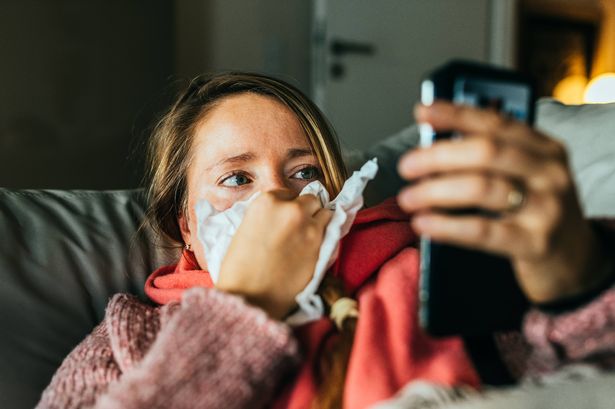A GP has warned that when temperatures drop, symptoms of a number of conditions can be mistaken for side effects of cold weather.
A doctor has cautioned that plummeting temperatures can mask the signs of several serious health conditions, with patients wrongly attributing their symptoms to simply feeling chilly.
This weekend, Scotland is set to be pummelled by 70mm downpours, accompanied by a yellow Met Office rain warning, as temperatures continue to drop.
**Dr Donald Grant**, GP and Senior Clinical Advisor at The Independent Pharmacy, said:
“During the colder months of the year, a range of illnesses and conditions can leave people feeling under the weather. However, the drastic change in weather conditions can cause people to mistake their illnesses for natural responses to the cold.”
### Bronchitis
“Firstly, bronchitis, a respiratory infection caused by airway inflammation, can have overlapping symptoms with the cold weather. Cold air itself can irritate the airways, leading to coughing and increased mucus production as a natural defence.
“For this reason, the persistent cough and mucus build-up characteristic of bronchitis may be mistaken for a normal winter reaction to chilly temperatures. However, if individuals experience chest congestion, wheezing, or shortness of breath, it could be a sign of this respiratory infection.
“The condition can range in severity, with acute and chronic bronchitis presenting varying intensities of symptoms. Despite this, if symptoms persist for more than a few days, it’s best to seek tailored advice and treatment from a GP,” said Dr Donald.
### Pneumonia
“Pneumonia is another common illness often mistaken for winter weather symptoms. Coughing, cold chills, and shortness of breath can all be overlapping symptoms of both the weather and this harmful illness.
“Untreated pneumonia can prove extremely risky to health, particularly for older individuals and those with a compromised immune system. As a result, people suffering from pneumonia should seek antibiotic treatment from their GP.”
### Sinus Infections
“Next, sinus infections can cause nasal blockages and runny noses — two extremely common symptoms of the body reacting to cold weather.
“However, this infection, caused by fluid build-up in the face’s air pockets, also causes fever and intense headaches. Examining nasal discharge can help identify a sinus infection, as it is typically thicker in appearance.
“Treatments such as Sudafed Sinus-Ease 0.1% Nasal Spray can prove incredibly effective at targeting congestion and pressure caused by sinusitis. This spray is fast-acting and provides up to 10 hours of relief from symptoms. It’s available over the counter and works by constricting blood vessels in the nasal passages,” he added.
### Asthma
“In cold winter weather, the dry air can cause our airways to narrow, leading to bouts of coughing, wheezing, and general difficulty breathing. These are hallmark symptoms of asthma, yet they’re often mistaken for the body’s natural response to cold conditions.
“This overlap in symptoms can make it challenging to identify asthma flare-ups versus typical winter reactions, especially as temperatures drop. Using simple tests, a doctor can diagnose asthma and advise on potential treatment options such as inhalers to help support respiratory function over the colder period.”
### Seasonal Affective Disorder (SAD)
“The harsher weather and reduced sunlight exposure can have a drastic effect on people’s moods. If someone isn’t aware of seasonal affective disorder (SAD), they may struggle to understand why they feel lower or less motivated,” said Dr Donald.
“To avoid SAD, it’s important to make the most of the daylight we do have and practice good habits such as mindfulness and maintaining a well-balanced, healthy diet, as this can help regulate moods.”
### Raynaud’s Disease
“Finally, Raynaud’s can cause hands and joints to feel tingly and change in colour — symptoms many people quickly attribute to the change in temperature, as cold weather typically produces a similar effect.
“However, if symptoms worsen or persist, the chances are they could be suffering from Raynaud’s Disease. It’s important to avoid sudden changes in temperature and cold surfaces while prioritising warm clothing if an individual is experiencing Raynaud’s symptoms.
“A GP can provide more tailored advice and recommend potential medications to minimise symptoms.”
### Final Advice
“Overall, this winter, it’s vitally important to monitor symptoms carefully when people believe they’re suffering from a harmful illness,” added Dr Donald. “Often, there are various indicators that the illness could be more serious or require medical attention.”
https://www.dailyrecord.co.uk/news/health/gp-says-watch-out-six-35971753
